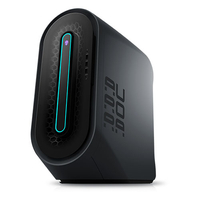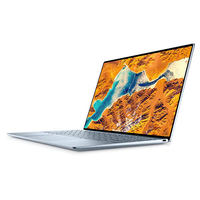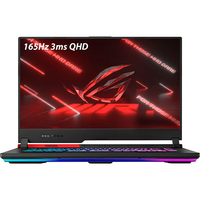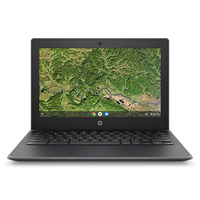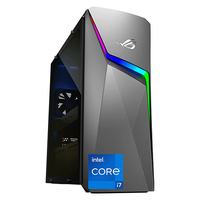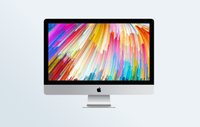If you’re looking for the former, there are a wealth of options available, with budget-conscious all-in-ones or powerful machines with high-end GPUs that are ideal for gaming or video editing work. There are slimline machines, too, provided you have your own monitor to connect it to. When it comes to laptops, you have plenty of choice across both Mac and PC. The former are pricey, but the new Apple Silicon chips inside them mean they sip battery life while still offering desktop-class power in creative tasks. On the PC side, you’ll find machines that offer portability and power in equal measure, with powerful GPUs to run the latest games at high frame rates. Naturally, there’s a correlation between the amount of power available and the price of the machine, so you can expect to pay more for a machine with a better GPU, CPU, or more RAM. Still, it’s worth future-proofing yourself where possible – many premade PCs (and all Apple Macs) can’t be upgraded after purchasing, which means it’s crucial to buy the right model since you can’t add to it later. Looking for more tech on Black Friday? Be sure to check out our roundups on the best deals, from refrigerators (opens in new tab) to printers (opens in new tab).
Cheap Black Friday computer deals
Computer deals
Cheap computers
The Mac Mini is at the bottom of Apple’s range, and despite the build to order options it’s never going to be the computer you want if your interests include 3D rendering or anything that needs a GPU. With the new M1 CPU, however, it will blitz its way through photo editing and any other CPU-intensive tasks with ease. It’s the perfect home office machine, and also excels as a media center, connecting to a TV directly or storing your media on its large, fast SSD and serving it via a system such as Plex. And it’s so small, you can easily keep it in a cupboard. As with the iMac, the Mac Mini comes with Apple’s MacOS operating system rather than Windows, although you can install Microsoft’s OS if you want to. Choosing between the two is largely a matter of taste, with no single big feature one can do that the other can’t. We’re seriously impressed with how much computer you get for your money with Acer. While the support and customer care options can’t match Dell, and you’re getting older and lower quality components inside, you actually get more power for your buck than at any other home computer manufacturer. These desktops are often on sale too, so don’t be surprised if you buy it for less than $500. This is superb value for what you’re getting. Acer has other desktop ranges, including the PS4-looking Veriton computers, but you’re paying more for the compact design here, and you’re getting less powerful PCs for your money. If Windows and Mac are a little too heavy for you, then Google’s ChromeOS is doing some very interesting things in the home computing space. While the company’s Chromebook range offers portability in spades, the Chromebase is a joint venture with HP that offers an all-in-one PC. Because it runs using ChromeOS, the apps included are Google’s own. If you’ve used an Android phone or are a keen Google Photos, Docs, or Drive user, you’ll feel right at home. There’s even the Play Store for adding additional apps to use, or playing games or streaming movies. That’s also arguably the biggest downside, though – because ChromeOS is a lightweight operating system, it just can’t compete for the sheer number of programs, services, and applications available on macOS or Windows. Still, if you can look past that, the swiveling display and built-in speaker are well worth a look. It’s got plenty of ports tucked into the base, comes with a Bluetooth mouse and keyboard combo, and has a built-in webcam for work calls and family time. There’s even Google Assistant support, so you can use it like a smart speaker, too, and ask what the weather is like or start playing a song using just your voice. The Lenovo Yoga C940 is the latest iteration of the high-end 2-in-1 laptop from the company that pioneered the concept. This time around though, the innovations comes in performance while the excellent 2-in-1 design remains largely untouched, letting you swap between laptop and tablet modes quickly and easily. Like many laptops these days, the Lenovo Yoga C940 goes for a minimalist look with a sleek metal body and minimal branding. This results in a stylish, but professional look and feel to the laptop, which means it suites both work and home use. There are a few downsides to consider though. At 2.98 lbs, it’s one of the heavier 2-in-1 laptops out there and battery life as good as it was in previous models. Still though, we’re huge fans of the Lenovo Yoga C940 and we think it’s easily one of the best hybrid laptops out there. In a world of identical looking laptops that all pack the same set of features and specs, the Asus Zenbook 14 tries something different with its innovative Screenpad, a trackpad that doubles up as a touchscreen with dedicated apps. Sadly, it’s a bit of a gimmick, but the Asus Zenbook 14 itself is a fantastic laptop, so we’ll forgive this indulgence on its part. For the asking price of $1,199 you get a chunky i7 processor, 16 GB of RAM and an SSD for storage, so the Asus Zenbook 14 is pretty well equipped to handle just about any task. At the same time, there are some extra touches like the ergonomically designed keyboard to improve comfort when using it for long stretches, which makes it an ideal work laptop. At first glance, the Huawei MateBook 13 seems like a bit of a jack of all trades, master of none in the laptop world. It has a good tech specs, but not exactly class-leading. The design is simple and stylish but doesn’t do much to stand out in a crowd and the QHD screen is quite middle of the road – better than FHD, but it doesn’t have the clarity of a true 4K screen. And yet despite that, we found a lot to like about the Huawei MateBook 13. It has some nifty features that you just don’t see on many laptops, like a fingerprint sensor for quick and easy unlocking. The 13-inch screen, while not true 4K, is excellent too (and honestly, at 13-inch screen size 4K is rather decadent, since you’ll struggle to notice much improvement over QHD or even FHD).
What to look for in computers and laptops
When buying a new computer or laptop, there are a series of key components that you’ll want to ensure you get right for an optimal experience. CPU Essentially the brain of your computer, your CPU will usually be made by AMD or Intel. The CPU, or Central Processing Unit, is the brain of your computer, and as you line up tasks your CPU will work out the optimal way to complete each. Newer Apple laptops work a little differently because they use a SoC (system on a chip) that contains the CPU, GPU (more on that in a moment), and other pieces of the computer. This means they’re energy-efficient because the chip works as one entity rather than throwing data between other components. GPU The Graphics Processing Unit, or GPU, is often referred to as a Graphics Card. While many cheaper machines have what’s known as “integrated graphics”, these tend to pale in terms of the power offered by bespoke GPUs that usually cost more. Often made by AMD or NVIDIA, generally speaking, the larger the number the more powerful the GPU. Again, Apple is the outlier here because their GPU is integrated into the SoC along with the CPU as mentioned earlier. The more powerful the GPU, the better the graphics on games and the more efficient video projects are to complete. RAM Acting as the connecting pathways between the CPU and GPU, RAM stands for Random Access Memory, and the more of it you have, the more your computer can do at any given time. The majority of machines (except Chromebooks) tend to ship with 8GB of RAM as a rough standard, but the more you have, the clearer your CPU and GPU’s lines of communication will be. More RAM is ideal for gaming, or for multitasking. Storage Storage means just how much your computer can hold in terms of apps, programs, games, and files. The higher your storage capacity, the more of your files you can store on your device. Many computers now offer SSD storage which stands for Solid State Drive. This is more reliable than prior storage on hard drives (HDD), and is becoming more affordable, too. Windows vs Mac vs ChromeOS There are three main operating systems for computers. Windows, from Microsoft, has been around the longest, and it’s great for gaming because it’s endlessly customizable and designed to run on as many machines as possible. macOS, on the other hand, is exclusive to Apple Mac computers, and is great for creative projects like audio engineering, photo editing, and video work. It’s also been around a while, and has its own App Store for finding new apps. Finally, ChromeOS is a lightweight OS that runs on much cheaper machines. Those low storage requirements are because it’s linked with Google’s services, meaning it ties into your Gmail, YouTube, and other existing platforms. There are pros and cons for each, but as a rule of thumb gamers should look at Windows machines, creatives will find a lot to like with Mac, and those that use a lot of Google apps and services should give ChromeOS a try.

